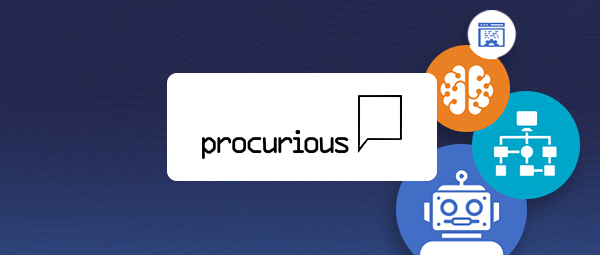The excitement surrounding Generative AI is hard to miss in the world of procurement. If you’ve attended an industry conference recently, you only have to join the nearest session with AI in the title to locate all the other attendees (shed a tear for any presenters in competing sessions).
A June 2024 study by Ardent Partners of nearly 400 procurement practitioners across the globe by Ardent Partners found 62% believe the impact of Generative AI on procurement in the next 2-3 years will be transformational or significant.
While actual usage is still quite low, leaders are rushing to deploy Generative AI. The same Ardent Partners study found that while only 26% are currently using Generative AI in procurement, a further 46% plan to in 2024.
As you look to do so in your organization, it’s important to build a plan to maximize adoption. Regardless of the excitement behind a new technology, and how well it works, assuming users will naturally embrace it is a surefire way to minimize the impact.
This is especially so when it comes to Generative AI, which is surrounded by nearly as much trepidation as excitement. A Dec. 2023 Forrester survey found that 36% of respondents fear losing their jobs to AI in the next 10 years. And most people have seen or heard of GenAI “hallucinations” or data breaches.
There are 3 core elements to consider in any plan to maximize adoption of Generative AI in procurement:
Communicate, Communicate, Communicate
An effective communication plan is essential to increasing the odds of employees feeling excited rather than concerned. Communication should start well before technology is selected. First, gather feedback from users when building your business case and defining your technology criteria.
Surveys are one option for broader input, or you can work with select representatives from different teams to gather deeper insights and create future champions. Input should capture where users see the greatest potential benefits from Generative AI in their role.
Such a process makes people feel that the technology is being brought on to help, not displace, them. It will also help you prioritize AI use cases in procurement.
Once the criteria and objectives are defined, communicate to employees in advance of roll-out. Be sure to explain the intended business objectives and the impact on their work. It is important to be specific.
For example, telling employees you plan to increase productivity doesn’t mean much to them and can even be interpreted as layoffs. But telling them they will be able to see the key details of a contract in seconds, or have a current, 360 degree category market report at their fingertips anytime they want, conveys a clear benefit.
Learn more: Transforming Procurement with Generative AI.
Keep it Simple
A key factor to how well Generative AI is adopted is how users access the new capabilities. The simpler and more natural it is, the greater adoption will be. With S2P vendors and a rapidly growing set of specialist vendors touting Generative AI capabilities, there is a risk of inadvertently complicating your employees’ lives with new systems, logins and interfaces.
To keep the experience simple, you should make Generative AI available in the applications users already use, typically Source-to-Pay (S2P) suites/platforms or point solutions. Ideally your procurement software vendors offer effective embedded solutions. If you feel you need to leverage external solutions for the capabilities you desire, try to integrate them into your S2P technology.
How users initiate Generative AI capabilities within applications also impacts adoption. More prescriptive use cases work best with a button – one click and the desired result is achieved.
Other use cases benefit from a conversational approach where users can clarify what is needed. Ideally, try to leverage systems that can leverage both, based on which is optimal for a particular use case.
Learn more about IVA (Intelligent Virtual Assistant).
Build Trust Through Quality
Having users keen to try Generative AI and able to easily access it can drive early adoption, but if the output is of poor quality, adoption will quickly deteriorate. Errors or hallucinations, where LLMs fabricate realistic sounding but inaccurate responses, are a real risk recognized by many people.
According to the 2023 McKinsey Global Survey on AI, the top risk identified by 913 respondents whose organizations have adopted Generative AI was inaccurate results, specified by 56% of respondents.
There are multiple aspects to consider when evaluating Generative AI technology in procurement to maximize quality, which I will cover in a subsequent blog. Here I will focus on what can be done internally during roll-out to maximize quality and build user trust. A few recommendations:
- Consider a use-case level roll-out: Piloting specific use cases before broadly deploying will ensure that defined use cases actually work. You will often find issues that result in poor output which would damage trust. These can result from models needing refinement, data issues or other sources. It is better to not deploy such use cases until issues are addressed.
- Conduct prompt engineering training: How users prompt GenAI in conversational formats has a major impact on the output quality. Providing training on the fundamentals, ideally using your own solution and practical scenarios, will pay off well.
- Set expectations: GenAI is already delivering impressive results, but it is far from perfect. Set expectations on where GenAI can be expected to work well or less well.
Having a holistic plan to drive adoption is a critical success factor, but just one of several. For a more complete look at this and other success factors, download our guide to building a strategic roadmap for Generative AI in procurement.
Download: A Practical Guide to Generative AI in Procurement.




